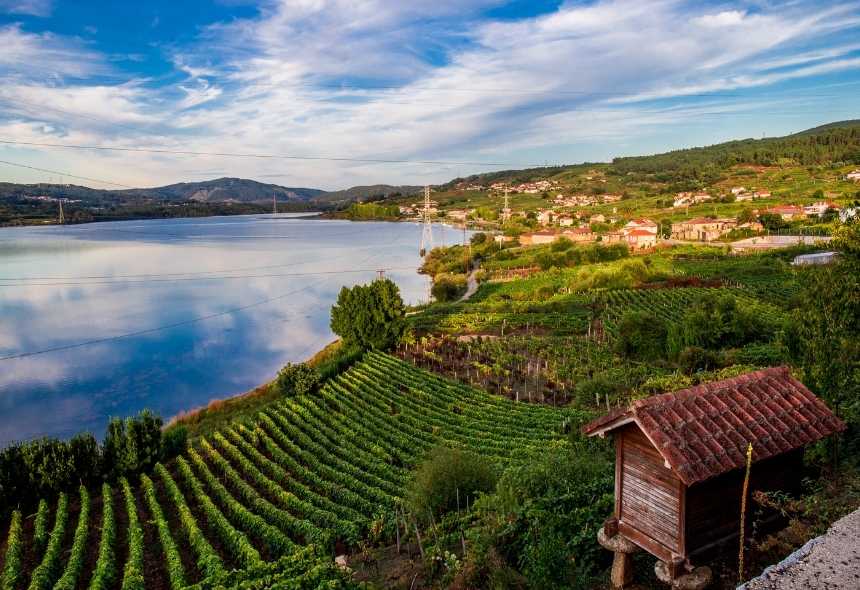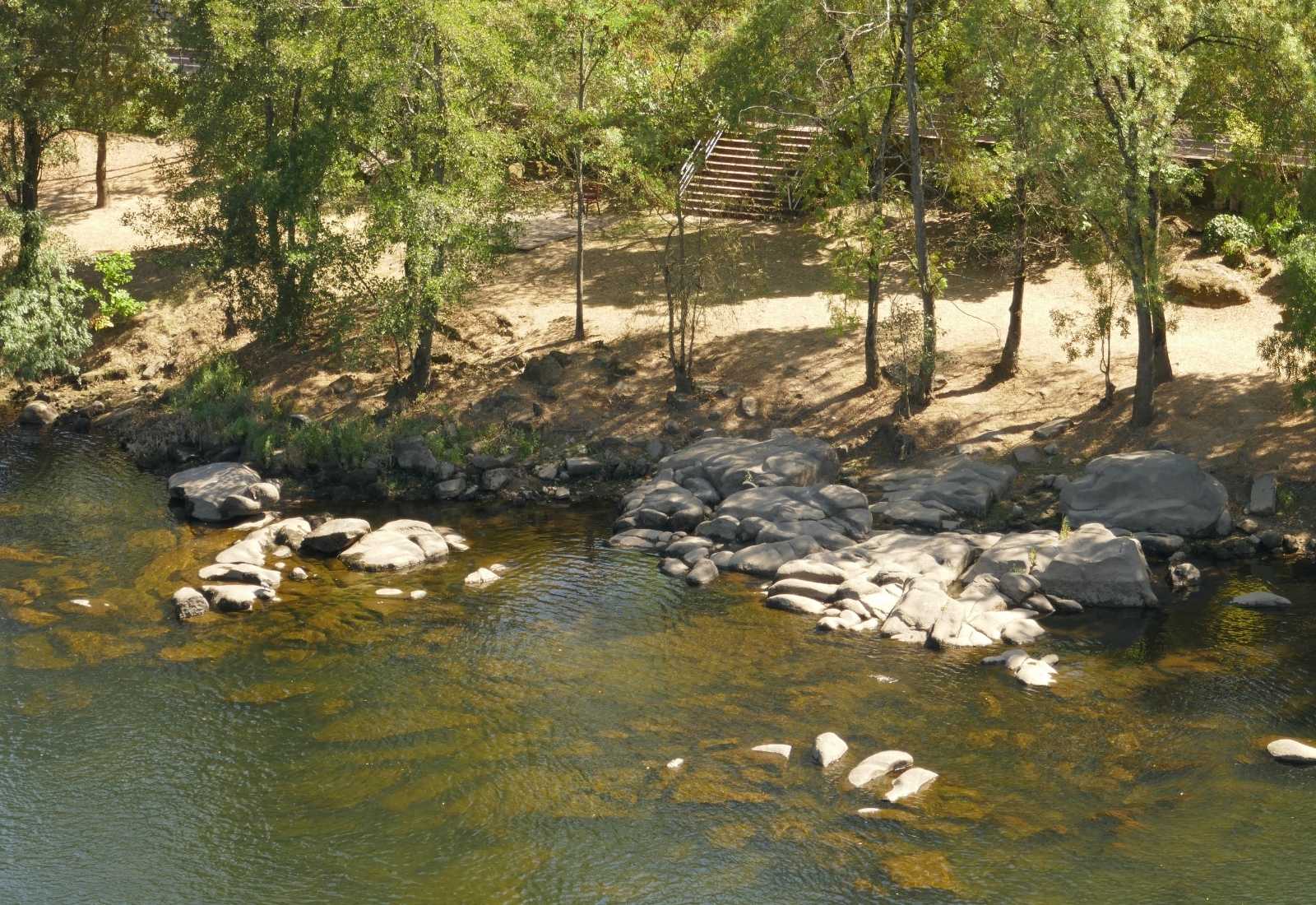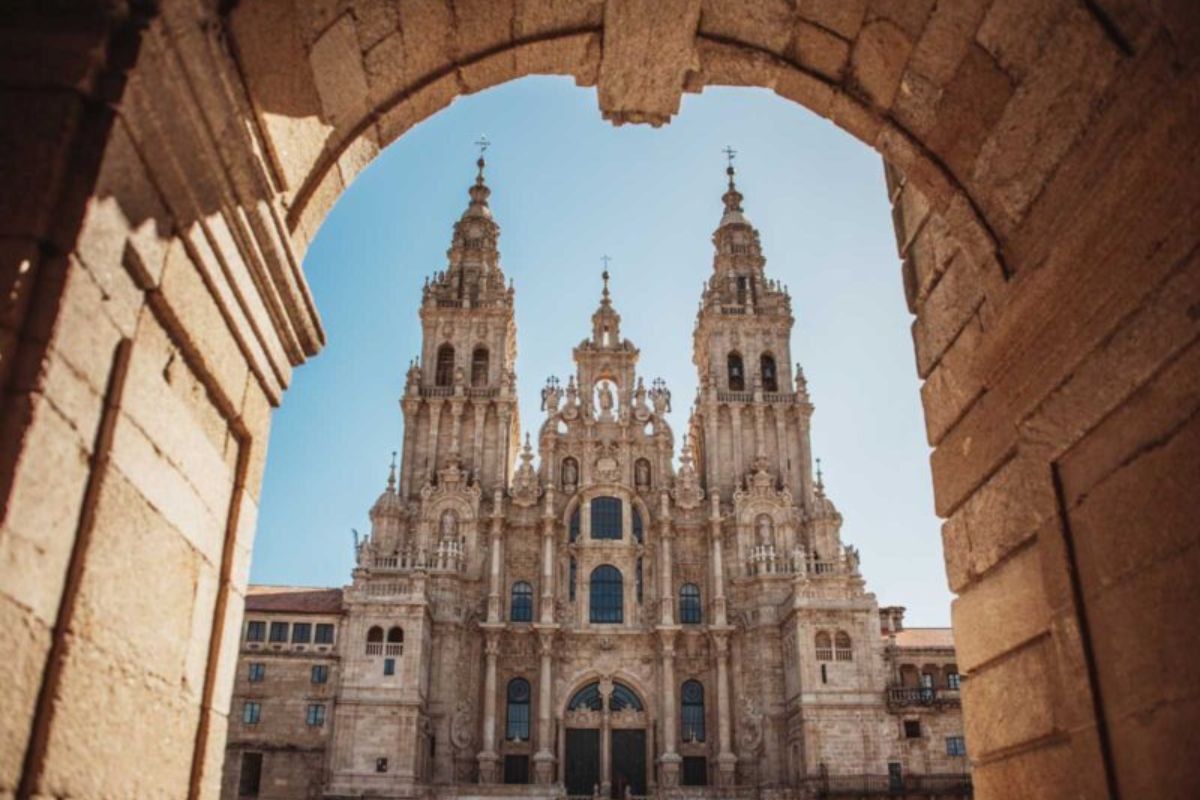- Origin and history of the Camino da Geira e dos Arrieiros
- Recommended stages of the Camino da Geira e dos Arrieiros
- Stage 1: Braga – Santiago de Caldelas (17 km)
- Stage 2: Santiago de Caldelas – Campo do Gerês (29 km)
- Stage 3: Campo do Gerês – Lobios (23 km)
- Stage 4: Lobios – Castro Laboreiro (28 km)
- Stage 5: Castro Laboreiro – Cortegada (33 km)
- Stage 6: Cortegada – Pazos de Arenteiro (26 km)
- Stage 7: Pazos de Arenteiro – Beariz (17 km)
- Stage 8: Beariz – Codeseda (29 km)
- Stage 9: Codeseda – Couso (Pontevea) (25 km)
- Stage 10: Pontevea – Santiago de Compostela (18 km)
- Practical tips for walking the Camino da Geira e dos Arrieiros
- Gastronomy and points of interest along the Camino
Camino da Geira e dos Arrieiros is a fascinating and still little-known route of the Camino de Santiago that connects Braga, in northern Portugal, with Santiago de Compostela. This historical and natural route follows ancient Roman roads and medieval paths used by the arrieiros (muleteers), traders who transported wine and other goods. By choosing this Jacobean route, pilgrims will experience a deep connection with the cultural and natural heritage of this cross-border region.

The Camino da Geira e dos Arrieiros, passing through the O Ribeiro region
Origin and history of the Camino da Geira e dos Arrieiros
Much of the route follows the ancient Roman Road XVIII, built to connect Braga (Bracara Augusta) with Astorga (Asturica Augusta). In fact, today pilgrims can observe numerous Roman milestones along the way, historical monuments over 2,000 years old that served to mark distances between Roman towns.
The arrieiros: medieval transport from the Ribeiro
During the Middle Ages, this route was widely used by arrieiros who carried wine and agricultural products from the Ribeiro region to Santiago and other major cities. This trade left a deep cultural imprint that can still be seen in local traditions and the hospitality of the villages the Camino passes through.
Since 2019, the Camino da Geira e dos Arrieiros has been officially recognized by the Cathedral Chapter of Santiago. This allows pilgrims to obtain the Compostela upon completing the route, as long as they meet the usual minimum requirements of distance and regular stamping of their pilgrim passport.

Roman milestones on the Camino da Geira e dos Arrieiros
Recommended stages of the Camino da Geira e dos Arrieiros
As we always mention, the division of stages depends on each pilgrim’s walking capacity, as well as the availability of accommodations. Below is a standard division of this approximately 239 km route from Braga, into 10 stages.
Stage 1: Braga – Santiago de Caldelas (17 km)
This first stage runs along gentle terrain and is perfect for getting used to the walk. Starting in Braga, a historic Roman city, the pilgrim crosses forests and small villages to reach Santiago de Caldelas, famous for its thermal baths—perfect for relaxing after the journey.
Stage 2: Santiago de Caldelas – Campo do Gerês (29 km)
The second stage increases in difficulty with ascending sections, entering the Peneda-Gerês National Park, one of Portugal’s most stunning natural areas. The landscape offers spectacular views and forest trails.
Stage 3: Campo do Gerês – Lobios (23 km)
This stage crosses the border between Portugal and Spain, standing out for its panoramic views of the national park. The arrival in Lobios is particularly enjoyable due to its famous natural thermal waters, ideal for soothing tired muscles.
Stage 4: Lobios – Castro Laboreiro (28 km)
A demanding stage that ventures deep into the mountains, passing through wild landscapes and authentic rural villages. Castro Laboreiro, with its historic castle, makes for a spectacular end to this physically and visually challenging stage.
Stage 5: Castro Laboreiro – Cortegada (33 km)
The route begins with a gentle descent through lush forests and small rural towns until reaching Cortegada, known for its medicinal hot springs and charming natural surroundings.

The hot springs of Ourense are a surprise for visitors
Stage 6: Cortegada – Pazos de Arenteiro (26 km)
This stage is notable for crossing the Ribeiro wine region, surrounded by vineyards, traditional wineries, and medieval villages. Pazos de Arenteiro, with its rich architectural heritage, invites pilgrims to explore and enjoy the Galician rural atmosphere.
Stage 7: Pazos de Arenteiro – Beariz (17 km)
A relatively short and peaceful day, ideal for enjoying the Galician natural and cultural landscape, crossing native forests, small rivers, and traditional villages until reaching Beariz.
Stage 8: Beariz – Codeseda (29 km)
The route continues through oak and chestnut forests, passing typical villages where one can interact with the locals. Arrival in Codeseda offers tranquility and an authentic rural setting.
Stage 9: Codeseda – Couso (Pontevea) (25 km)
A moderate stage with a predominantly gentle route, preparing for the arrival in Santiago. The town of Couso offers good services and pilgrim hospitality.
Stage 10: Pontevea – Santiago de Compostela (18 km)
The final stage leads pilgrims to the long-awaited Plaza del Obradoiro in Santiago, ending their pilgrimage with emotion and satisfaction after a journey full of history and nature.

Santiago Cathedral awaits all pilgrims from every route
Practical tips for walking the Camino da Geira e dos Arrieiros
In addition to the general tips for enjoying the Camino de Santiago, we recommend the following:
- Physical preparation: To walk the Camino da Geira e dos Arrieiros, we recommend having a good physical condition due to the variable terrain, with significant slopes and demanding sections, especially in mountainous areas.
- Best time of year: Spring (April–June) and autumn (September–November) are the best periods to walk this route, like many others, thanks to their mild and pleasant climate. Summer is discouraged due to high temperatures, and winter due to harsh weather.
- Waymarking: Waymarking has improved considerably, but it is still advisable to use GPS apps specific to the Camino to avoid getting lost in remote areas.
- Stage and accommodation planning: It’s a good idea to plan each stage carefully to ensure accommodation, which along this route is limited and usually consists of small hostels or rural houses. We recommend booking in advance, especially during high season, to guarantee availability.
- What to bring: As always, when it comes to what to bring on the Camino, carry only the essentials in your backpack: lightweight technical clothing, comfortable and sturdy footwear, sunscreen, a light raincoat, and a small first-aid kit. Since some sections are isolated, it is crucial to always carry water and enough food.
- Pilgrim passport: If you don’t bring it from home, you can get your pilgrim passport at Braga’s Sé Cathedral or at the city’s tourist office.
- By bicycle: This route can be done by bike, although there are challenging sections, especially in the Peneda-Gerês National Park area and some mountainous stages. A mountain bike and prior experience on long routes are recommended.

Typical hearty Galician octopus dish
Gastronomy and points of interest along the Camino
One of the greatest attractions of the Camino da Geira e dos Arrieiros is the natural, cultural, and gastronomic richness that accompanies the pilgrim throughout the route. At every step, the trail offers unique experiences like outdoor thermal baths, charming villages, postcard-worthy landscapes, and local cuisine that comforts both body and soul.
Among the most special stops are the natural hot springs of Lobios and Cortegada, where you can soak in warm waters at the end of a demanding day. The historic mills of Pazos de Arenteiro transport you to another era, while various viewpoints along the route — such as those in Campo do Gerês, Castro Laboreiro, or Codeseda — offer spectacular views of valleys, vineyards, and mountains.
And speaking of gastronomy, it’s impossible not to mention two major highlights: the fresh and light Portuguese vinho verde, perfect for accompanying a meal under the arcades of any village; and the Ribeiro wines, made from treixadura, godello, or torrontés grapes, which pair perfectly with traditional dishes. Your table will be filled with delicacies like pulpo á feira, Galician empanada, and Portuguese-style cod.

Camino da Geira e dos Arrieiros, a very special Portuguese route
If you’re looking for an authentic Camino, full of history and far from the more crowded routes, the Camino da Geira e dos Arrieiros is an unbeatable option. Yes, it’s a demanding route, but also a deeply transformative one. Very close to this trail runs the Camino Miñoto Ribeiro, another highly interesting option that combines thermalism, wine, and rural culture—perfect for those seeking a more relaxed and gastronomic Camino. And let’s not forget that Portugal hides a diverse network of Jacobean routes beyond the well-known Central Portuguese Way, such as the Portuguese Interior Way, the Coastal Portuguese Way, the Camino de Torres, or the emerging Camino Taverneiro, among others. All of them offer unique richness and let you discover our neighboring country from new perspectives.
In truth, there isn’t just one Camino or a single way to live it. There are as many Caminos as there are pilgrims, and each route has its own rhythm, its challenges, and its particular beauty. Choosing one route or another is, in the end, a way to listen to yourself and decide what kind of experience you want to live. The important thing is not just reaching Santiago, but everything that happens between the first and the last stage: the people you meet, the landscapes you cross, the questions you ask yourself, and the silence you sometimes need. And for that, the Camino da Geira e dos Arrieiros is an exceptional choice that we’re sure will surprise you — and in the best possible way!












Leave A Comment